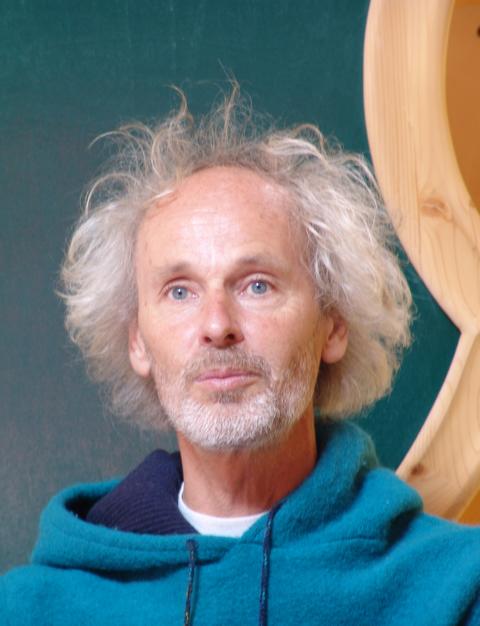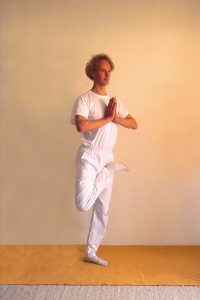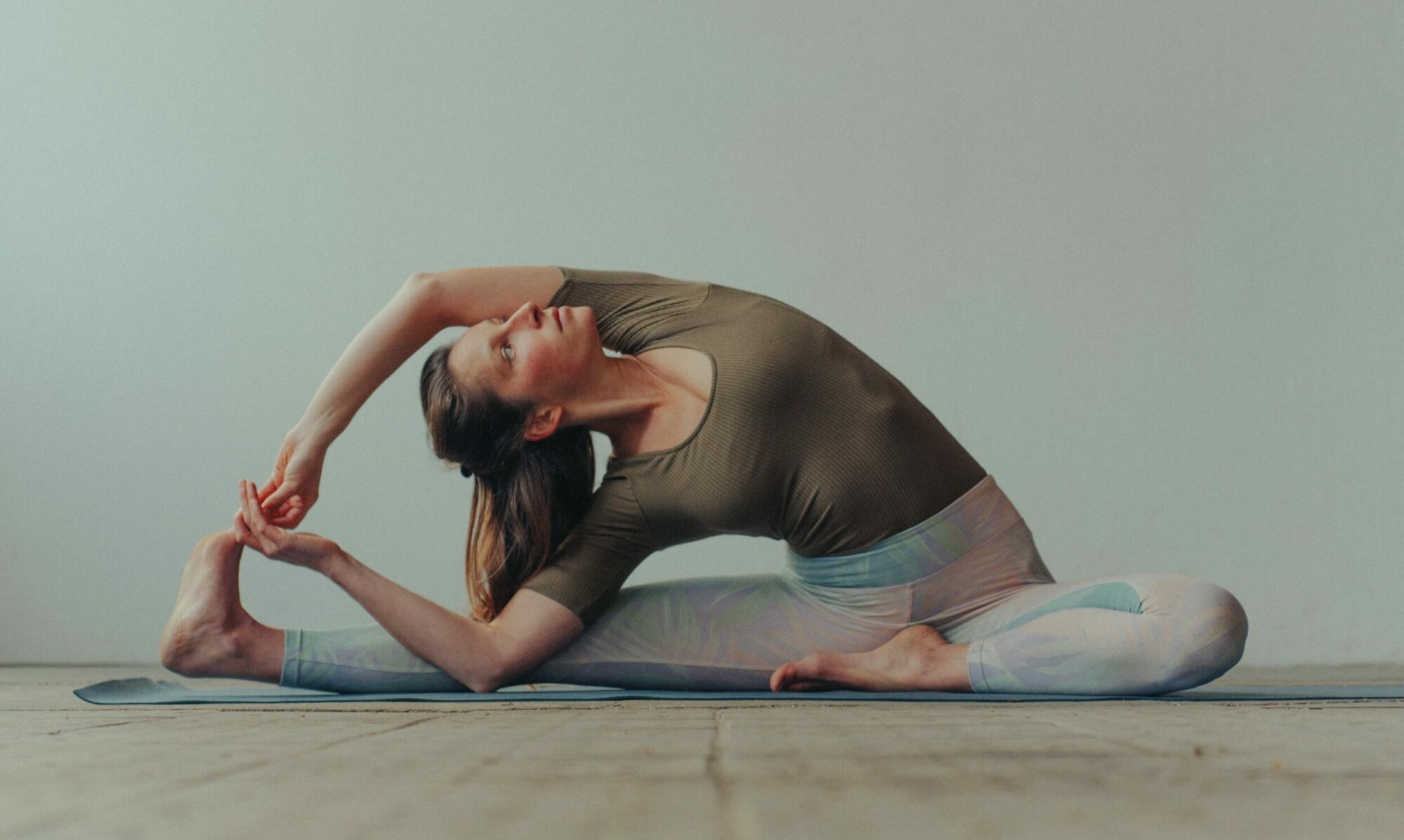
Heinz Grill (born 1960 in Germany)
has founded a contemporary spiritual training path, the “New Yoga Will”, over the last 35 years and now lives on Lake Garda in Italy.
He is a spiritual teacher, yoga teacher, alternative practitioner, alpinist and author with a comprehensive oeuvre of over 60 books.
He does not see his life’s work as a new style or direction of yoga. Rather, he wants to promote the individuation of the individual, which is completely independent of a yoga style or religious conviction. This training path can therefore enrich all exercise practices and areas of life in a completely free way and infuse them with new insights.
A path from top to bottom
On the basis of classical yoga and anthroposophy, he conducted very personal research into mental and spiritual laws and their impact on people in Western culture today.
The physical exercises of yoga (asana) play a central role in this path of training. They are part of the spiritual path of training and serve as a means of expression for the practitioner’s developed spiritual and mental insights. The spiritual study is therefore not to be seen separately from the physical practice; it is directly linked to the physical exercises via the process of realization (jnana).
The body becomes an aesthetic means of expression for the soul
How do you practise? Spiritual and practical thoughts about the asana are at the beginning of the practice. They are explored in advance in a personal discussion and then further explored in a practical way while performing the physical exercises. In this way, practicing with the body is enriched with a lively activity of consciousness and experience shows that the body fits into the movements more easily and effortlessly. The images and ideas obviously prepare the movement.
It is therefore not just about physical training, as more attention is paid to the aesthetic expression of the exercise than to physical perfection. This is the first time that physical exercises have become exercises for the soul. Here is an example:
In general, hatha yoga trains the body and charges it energetically by synchronizing breathing and movement. However, Heinz Grill suggests leaving the breath completely free in the physical exercises instead of using it to charge the body with energy.
A free breath accompanies the practice here and is consciously perceived in its intensity and quality, depth and breadth in the various regions of the body through various light movements. Demanding exercises are not only a physical challenge; they challenge the consciousness to remain alert and observant with regard to breathing and physical conditions.
Heinz Grill describes the procedure in Die Heilwirkungen der gelösten Bewegung as follows:
“The intense emotional sensing of the body in terms of well-being or pain gives way to a clear observation, a neutral, mentally oriented perception that is not so tied back to the feelings of the body. Although the practitioner perceives comfort and pain, he remains as free as possible from these phenomena in his consciousness and directs his attention responsibly until he can assume an aesthetic and ideal position. For example, if the pain sets a limit to the movement, the practitioner does not try to break through it or breathe away the tension that arises, but rather observes the relationship to the body and its various emotional reactions. They do not make themselves completely dependent on comfort or discomfort, but rather use their imagination to form an increasingly relaxed state, consciously allowing the breath to flow easily and finally developing the renewed formation and tension for the asana from that moment of relaxation and the first release from the body. A light and aesthetic expression finally emerges in the final pose.”
The book“The Free Breath and the Light Soul Process – The New Yoga Will in its Relationship to Anthroposophy” contains many suggestions on free breathing for beginners as well as advanced yoga practitioners.
The social component of yoga:
Centered inwards and open to the outside world
Heinz Grill describes conscious outward alertness as an ideal in yoga practice and as a requirement of our time in order to achieve true inner peace and ultimately meditation.

This ideal can be studied using the example of tree tadasana: The whole person is upright and perpendicular, the eyes are open and perception is directed straightforwardly outwards. Nevertheless, the person appears centered inwards, more precisely towards the spine and the heart.
In Rajayoga, pratyahara, the withdrawal of the senses, is described as the 5th stage of the yoga path. Ancient Indians had to withdraw their sensory activities such as seeing, hearing, smelling, tasting and touching as much as possible in order not to become attached to the world. Even today, most people feel exhausted and alienated from themselves by the many sensory impressions in our hectic and fast-paced world. They want to close their eyes and finally find peace and meditate. That’s why you want to leave all your everyday impressions behind you in a yoga class.
In the New Yoga Will, however, directing the senses outwards is of particular importance, because it is precisely in the meaningful and even deepened relationship with the phenomena of the world that an awareness of the deeper contexts of life should take place, which ultimately leads to inner contemplation and meditation. The practitioner of yoga thus connects more intensively with the world, but still remains free from its ties. Of course, these contemplations must be directed in a targeted way so that they lead to concentration rather than distraction. There is a remarkable article on this topic in Yogawiki: Pratyahara possibilities and comparisons with the anthroposophical path of training
This openness and interest in your surroundings will naturally transfer to your social life. An urgent necessity, because how many people withdraw due to excessive demands in everyday life, seek regeneration in withdrawal from the world or in compensation and suffer more and more from an inner emptiness with a lack of relationships, insensitivity and loneliness.
And finally: How does a free movement come about?
In the article: Movement from the Etheric, Heinz Grill describes the difference between a purely motor movement, which is subject to gravity, and a sensory movement, which is based on the laws of the so-called etheric body or pranic body, and is therefore no longer subject to gravity.
In the following video, it is easy to see how the movement can be created by letting go of the body. Even if this is beyond your personal capabilities, studying the connections can enrich your individual practice. Yoga practitioners can achieve more ease, freedom and aesthetics at their own personal level.
See also the description of the exercise practice in The New Yoga Will
Continue to page: Traditional yoga and looking to the future
Bildquellen
- K640_Heinz_Grill: By Robert Lindermayr - Own work, 2012 | CC BY-SA 4.0 International
- Heinz Grill Yogaposition: Baum tadasana: Die Seelendimension des Yoga, mit freundlicher Genehmigung vom STW-Verlag | All Rights Reserved
